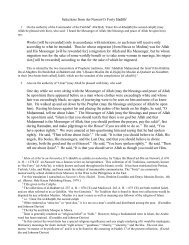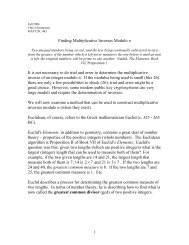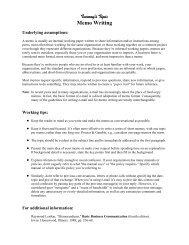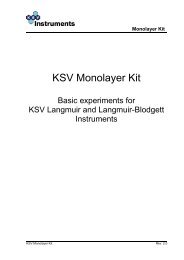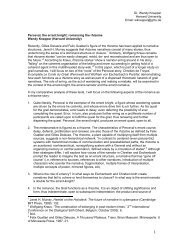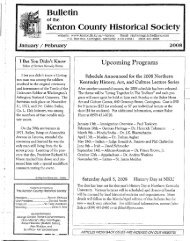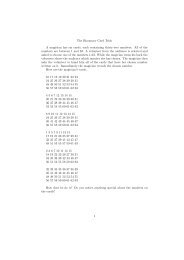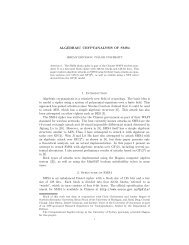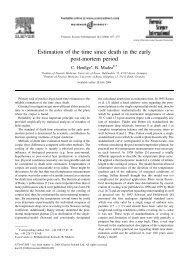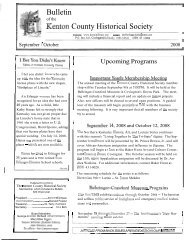The Appendicular Skeleton
The Appendicular Skeleton
The Appendicular Skeleton
You also want an ePaper? Increase the reach of your titles
YUMPU automatically turns print PDFs into web optimized ePapers that Google loves.
<strong>The</strong> <strong>Appendicular</strong> <strong>Skeleton</strong><br />
C. Long Bone in Longitudinal Section<br />
In addition to looking at various bones of the appendicular skeleton, you<br />
should take a look at a longitudinal section of the humerus or other long<br />
bone. This section will enable you to see the medullary (marrow) cavity,<br />
spongy and compact bone, and other features. On Figure 3–1, match<br />
the numbers to the appropriate parts of the bone. Some of the features (e.g.<br />
marrow and cartilage) can only be seen in fresh bone, and are not present<br />
in the dry bones that are available in the lab.<br />
1<br />
9<br />
8<br />
7<br />
5<br />
2<br />
3<br />
6<br />
A. Match the labels with the<br />
following terms:<br />
___ Articular cartilage<br />
___ Compact bone<br />
___ Diaphysis<br />
___ Distal epiphysis<br />
___ Endosteum<br />
___ Medullary cavity<br />
___ Periosteum<br />
___ Proximal epiphysis<br />
___ Spongy bone<br />
4<br />
Figure 3-1. PARTS OF A LONG BONE<br />
3-13



